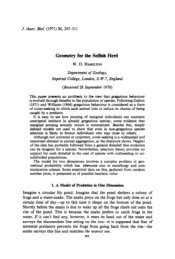Jenis Crinoid Feather Stars
Jenis Crinoid Feather Stars
Jenis Crinoid Feather Stars
You also want an ePaper? Increase the reach of your titles
YUMPU automatically turns print PDFs into web optimized ePapers that Google loves.
o Their Pinnules arose in several lineages during the Paleozoic and are<br />
characteristic of all post-Palaeozoic crinoids.<br />
o The comatulids evolved from stalked crinoids by losing their column during<br />
their larval development.<br />
• <strong>Crinoid</strong>s came close to extinction towards the end of the Permian Period, about<br />
250 million years ago.<br />
• The end of the Permian was marked by the largest extinction event in the history<br />
of life and fossil records show that nearly all the crinoid species died out at this<br />
time.<br />
• The one or two surviving lineages eventually gave rise to the crinoids populating<br />
the oceans today.<br />
• The close relatives are starfishes, sea urchins, sea cucumbers, and brittle stars<br />
which reside in the same phylum.<br />
• These species are related to eachother because they share many similar<br />
features.<br />
o For the most part, their body parts are arranged around a central axis.<br />
o They have rough, spiny surfaces which is what their phylum means (“spiny<br />
skin”).<br />
o They have a special kind of radial symmetry based on multiples of five.<br />
o They share a unique body system called the water-vascular system, which<br />
no other group of animals possess.
















